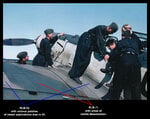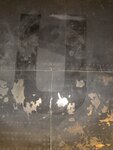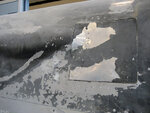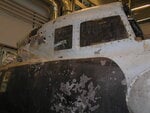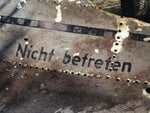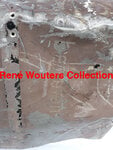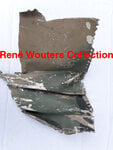- Thread starter
- #61
Well, if you don't believe paint can survive in seawater for forty years with its hue still in an identifiable condition, then I suggest you take a look at some of the more-recent finds in Norwegian waters.
Here's a shot of Focke Wulf 190 A-2 (Gelbe 16) being raised on the 1st of November 2006. It ditched in the sea near Herdla (about 40 km northwest of Bergen) on the 15th of December 1943. That's 63 years submerged in sea water and yet its colour scheme was still clearly identifiable when it was brought to the surface. Berge's 109C was only in sea water for 40 years and he was right there on deck to examine it before its condition deteriorated any further.

12 Abandoned, Wrecked & Recovered Aircraft of World War Two - Urban Ghosts Media
And here are some close ups of the paint on Gelbe 16's wing. How could these colours be identified as anything other than 74/75?



If the paint on Berge's 109C was in anywhere near the same condition, it's inconceivable that he could have misinterpreted 71/02 as 74/75. Just going by the detail he provided in his article indicates he knew what he was talking about and made a thorough investigation of the paint left on the airframe. He even documented the demarcation lines, noting they were hand-painted, and the revised number on the fuselage. And by "documented", he meant recorded or reported. He was not referring to period documents, but the recording or documenting of his own findings. The verb "to document" means to record information about something by writing about it or taking photographs of it. In other words, he meant Werk Nr 2450 is the earliest example recorded by a researcher of the use of 74/75/76.
And if you think the paint on Gelbe 16 was a one-off or a freak occurrence and couldn't possibly be representative of what Berge saw on Werk Nr 2450, then what about this 109G, which was raised in 2010 after 67 years in seawater near Gjerdinga Island, about 300km north of Trondheim?

Bf 109 Vikna
Anyway, I'm quite satisfied to take Berge's word for what he found on Werk Nr 2450. I don't see why he should be held to a higher standard than the other researchers in this field, whose writings seem to be automatically taken at face value, even when they don't state their sources. Berge had access to an actual BF 109C airframe from 2 June 1940 as his source of reference. Hard evidence doesn't get much better than that.
I'm sorry, I've been sidetracked. I've got a few more things to say on why I believe the claimed 71/02 splinter pattern scheme never existed, but it'll have to wait. In the meantime, please keep all that evidence coming to justify why you so staunchly believe 71/02 was an actual Luftwaffe fighter scheme.
Here's a shot of Focke Wulf 190 A-2 (Gelbe 16) being raised on the 1st of November 2006. It ditched in the sea near Herdla (about 40 km northwest of Bergen) on the 15th of December 1943. That's 63 years submerged in sea water and yet its colour scheme was still clearly identifiable when it was brought to the surface. Berge's 109C was only in sea water for 40 years and he was right there on deck to examine it before its condition deteriorated any further.
12 Abandoned, Wrecked & Recovered Aircraft of World War Two - Urban Ghosts Media
And here are some close ups of the paint on Gelbe 16's wing. How could these colours be identified as anything other than 74/75?
If the paint on Berge's 109C was in anywhere near the same condition, it's inconceivable that he could have misinterpreted 71/02 as 74/75. Just going by the detail he provided in his article indicates he knew what he was talking about and made a thorough investigation of the paint left on the airframe. He even documented the demarcation lines, noting they were hand-painted, and the revised number on the fuselage. And by "documented", he meant recorded or reported. He was not referring to period documents, but the recording or documenting of his own findings. The verb "to document" means to record information about something by writing about it or taking photographs of it. In other words, he meant Werk Nr 2450 is the earliest example recorded by a researcher of the use of 74/75/76.
And if you think the paint on Gelbe 16 was a one-off or a freak occurrence and couldn't possibly be representative of what Berge saw on Werk Nr 2450, then what about this 109G, which was raised in 2010 after 67 years in seawater near Gjerdinga Island, about 300km north of Trondheim?
Bf 109 Vikna
Anyway, I'm quite satisfied to take Berge's word for what he found on Werk Nr 2450. I don't see why he should be held to a higher standard than the other researchers in this field, whose writings seem to be automatically taken at face value, even when they don't state their sources. Berge had access to an actual BF 109C airframe from 2 June 1940 as his source of reference. Hard evidence doesn't get much better than that.
I'm sorry, I've been sidetracked. I've got a few more things to say on why I believe the claimed 71/02 splinter pattern scheme never existed, but it'll have to wait. In the meantime, please keep all that evidence coming to justify why you so staunchly believe 71/02 was an actual Luftwaffe fighter scheme.

